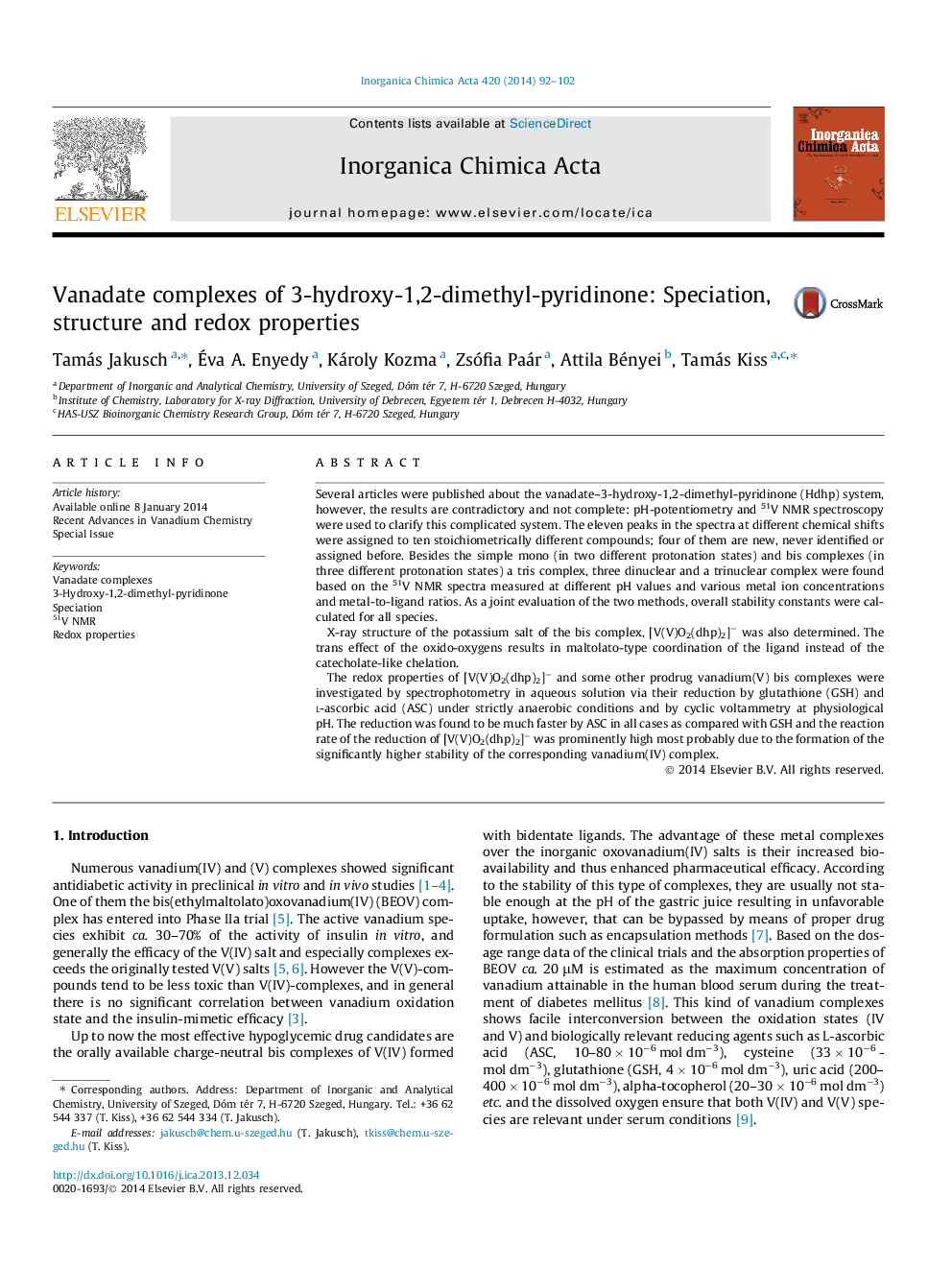| کد مقاله | کد نشریه | سال انتشار | مقاله انگلیسی | نسخه تمام متن |
|---|---|---|---|---|
| 1305542 | 1499168 | 2014 | 11 صفحه PDF | دانلود رایگان |
• Speciation were completed for V(V)–3-hydroxy-1,2-dimethyl-pyridinone (dhp) system.
• Four new species, for example a tris-ligand complex was identified.
• X-ray structure of K[V(V)O2(dhp)2] was determined.
• The dhp is able to coordinate both as catecholate and maltolate.
• The reduction of the complex [V(V)O2(dhp)2] by ASC was found to be the fastest.
Several articles were published about the vanadate–3-hydroxy-1,2-dimethyl-pyridinone (Hdhp) system, however, the results are contradictory and not complete: pH-potentiometry and 51V NMR spectroscopy were used to clarify this complicated system. The eleven peaks in the spectra at different chemical shifts were assigned to ten stoichiometrically different compounds; four of them are new, never identified or assigned before. Besides the simple mono (in two different protonation states) and bis complexes (in three different protonation states) a tris complex, three dinuclear and a trinuclear complex were found based on the 51V NMR spectra measured at different pH values and various metal ion concentrations and metal-to-ligand ratios. As a joint evaluation of the two methods, overall stability constants were calculated for all species.X-ray structure of the potassium salt of the bis complex, [V(V)O2(dhp)2]− was also determined. The trans effect of the oxido-oxygens results in maltolato-type coordination of the ligand instead of the catecholate-like chelation.The redox properties of [V(V)O2(dhp)2]− and some other prodrug vanadium(V) bis complexes were investigated by spectrophotometry in aqueous solution via their reduction by glutathione (GSH) and l-ascorbic acid (ASC) under strictly anaerobic conditions and by cyclic voltammetry at physiological pH. The reduction was found to be much faster by ASC in all cases as compared with GSH and the reaction rate of the reduction of [V(V)O2(dhp)2]− was prominently high most probably due to the formation of the significantly higher stability of the corresponding vanadium(IV) complex.
Speciation in the vanadate–3-hydroxy-1,2-dimethyl-pyridinone system was clarified by pH-potentiometry and 51V NMR spectroscopy. X-ray structure of the potassium salt of the bis complex, [V(V)O2(dhp)2]− was also determined. The trans effect of the oxido-oxygens results in maltolato-type coordination of the ligand instead of the catecholate-like chelation.The redox properties of [V(V)O2(dhp)2]− and some other prodrug vanadium(V) bis complexes were also investigated. The reduction was found to be much faster by ASC in all cases as compared with GSH. The reduction of the of [V(V)O2(dhp)2]− was prominently fast due to significantly high stability of the vanadium(IV)–dhp complex.Figure optionsDownload as PowerPoint slide
Journal: Inorganica Chimica Acta - Volume 420, 24 August 2014, Pages 92–102
